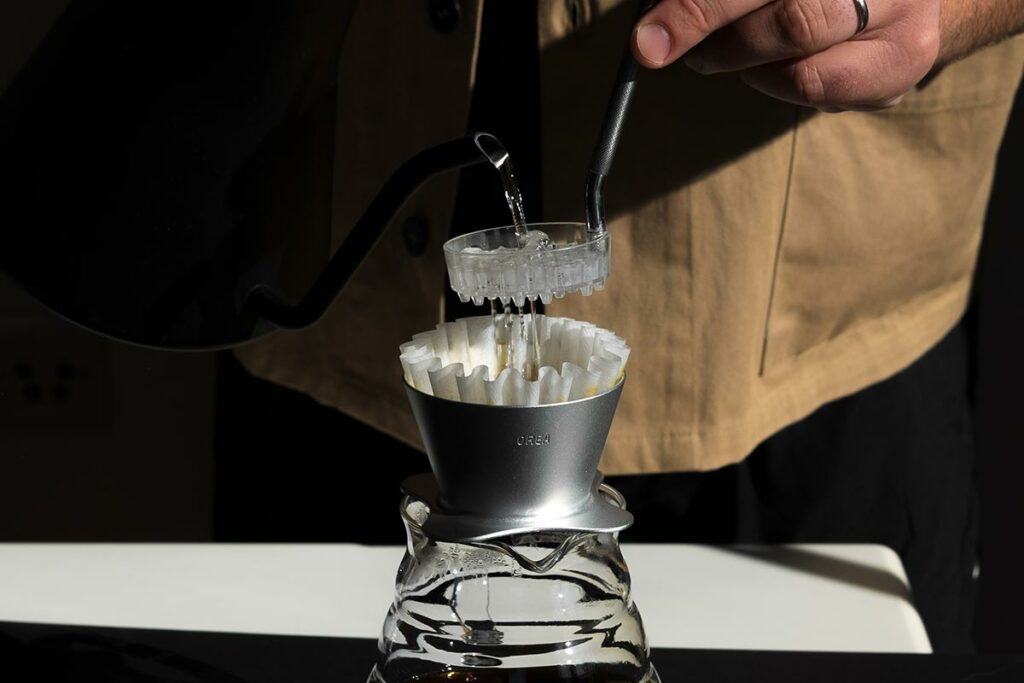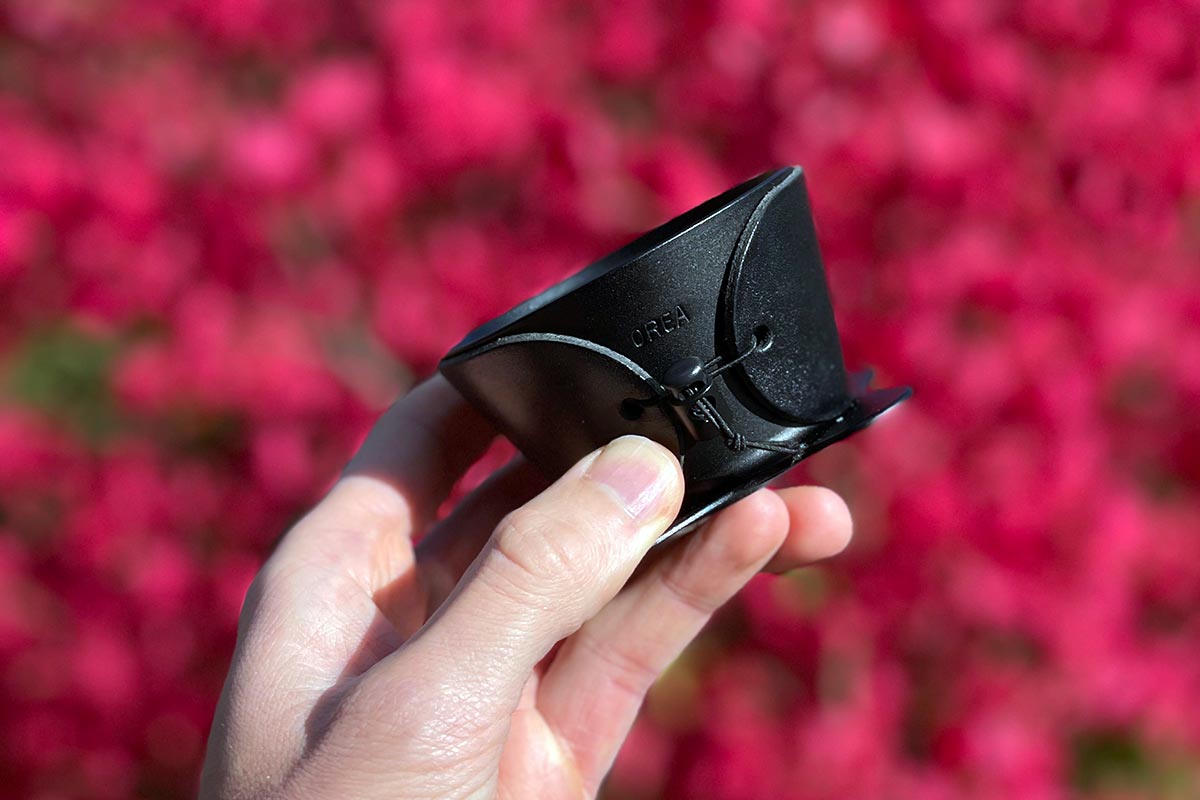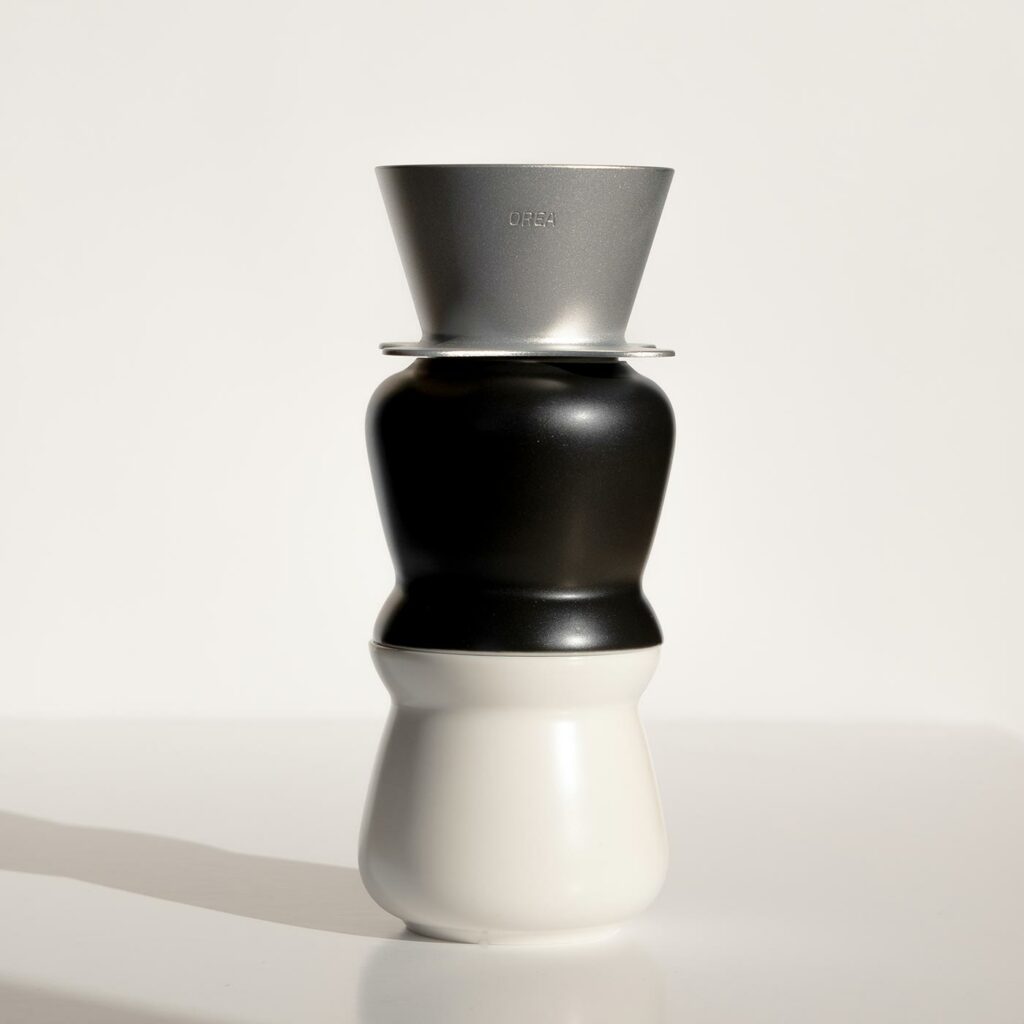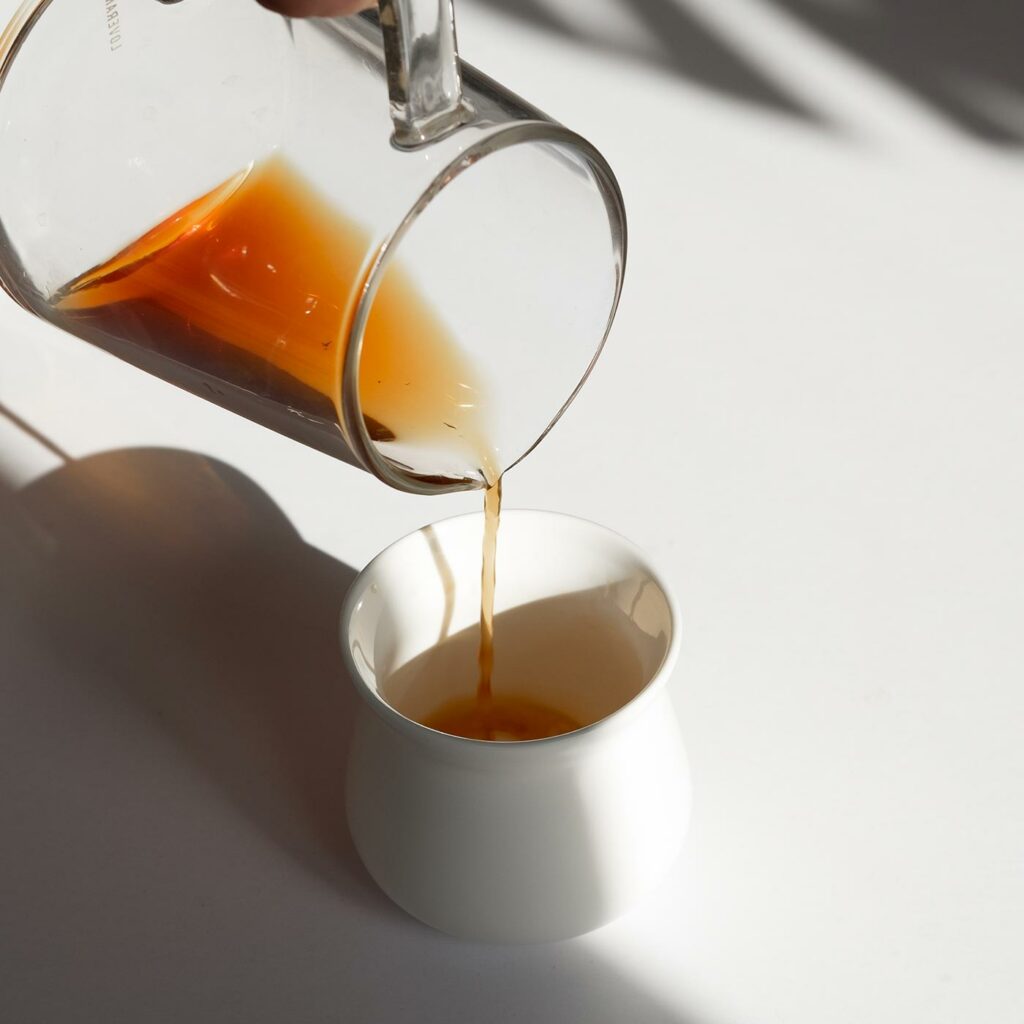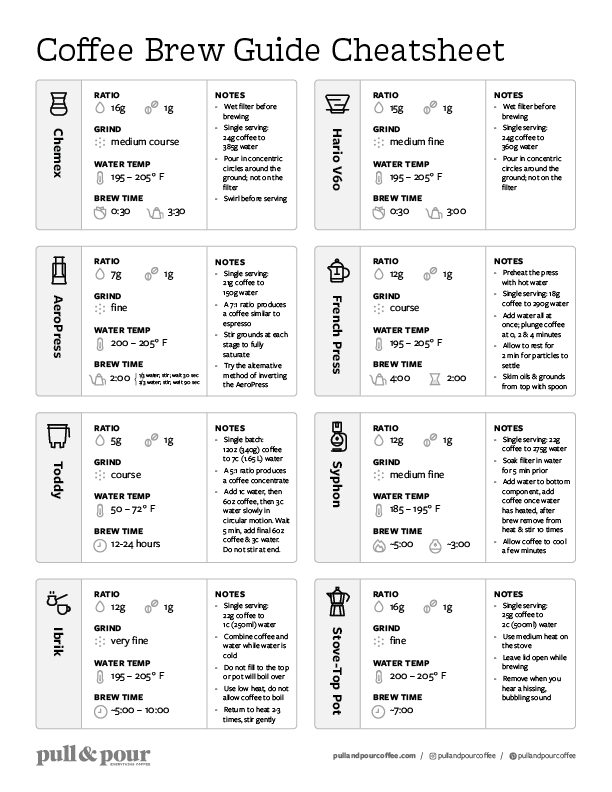The Orea brewer is a unique flat-bed brewer that came into the specialty coffee world with a bang earlier this past year. Within weeks of making coffee with the Orea, it became one of my favorite brewers and the one I continue to gravitate towards for smaller brews. It has a unique geometry that leads to fast draw-downs and incredibly consistent brews. The aluminum body is made from a single block of metal and helps keep the high temperature throughout the entire brewing process. The cups I brew with the Orea are consistently sweet, bright, and have fantastic clarity.

I’m not the only one who has fallen in love with the Orea. I constantly hear others rave about the little brewer on Instagram and it’s been the brewer of choice for multiple Brewing Champions. With all of this attention and love, I wanted to learn more about the Orea—how it got its name, the story of its creation, and where it plans to go from here. I chatted with Horia Cernusca, the creator of the Orea, to learn more about this tiny, but mighty brewer I’ve come to love using so much.
Where did the name “Orea” come from?
I was searching for names with relation to mountains because Orea was made for the outdoors and all great coffee comes from the mountains. Orea means “from the mountains” in ancient Greek and in modern Greek, it means “beautiful”. I liked this a lot—coffee is from the mountains so it’s a nice relation.
What inspired you to create a new coffee brewer?
I actually didn’t set out to create the Orea. It was at a time I was traveling through Europe & Asia. I had a v60, but wasn’t happy with how it traveled. I started to experiment to create a brewer that worked better for me. With a bit of trial and error, a bit of tape, and some cardboard, I made the first version of a dripper designed by me. It folded & weighed nothing. I threw it in my bag and traveled back home. My family laughed at me and my cardboard dripper, but they actually really enjoyed the coffee I made for them with it.
This got me into a space where I started to dig very deep into coffee dripper design—into how geometry would impact brew dynamics, what impacts flow most, how temperature impacts brews and so on.
This got me into a space where I started to dig very deep into coffee dripper design—into how geometry would impact brew dynamics, what impacts flow most, how temperature impacts brews, and so on. I started to prototype a lot of ideas with a foldable dripper playing with altering the wall angle and drainage hole design. In the process, I got to learn a lot more about 3D printing, laser cutting, vacuum forming, injection molding, and other ways to manufacture. I was about to launch a Kickstarter with this foldable version of the dripper, but then randomly got inspired by the form-factor of Kalita-style flat bottom brewers. What I saw in flat-bottoms was the potential to have a much smaller device that can travel well, but still be great day-to-day. I started to explore ways to make a less bulky flat-bottom dripper that has faster flow, better airflow throughout, that is as little dripper as possible, so it can travel and pack very well.
Within a few weeks, I was testing various 3D prints. I tried versions with a few holes in the bottom, bumps in the middle, and eventually to the now-well-known Orea ring. I found this approach worked best. I got consistent brews, incredible brightness, and it packed and traveled very well. I immediately ditched the foldable dripper and became very determined to launch this new dripper.
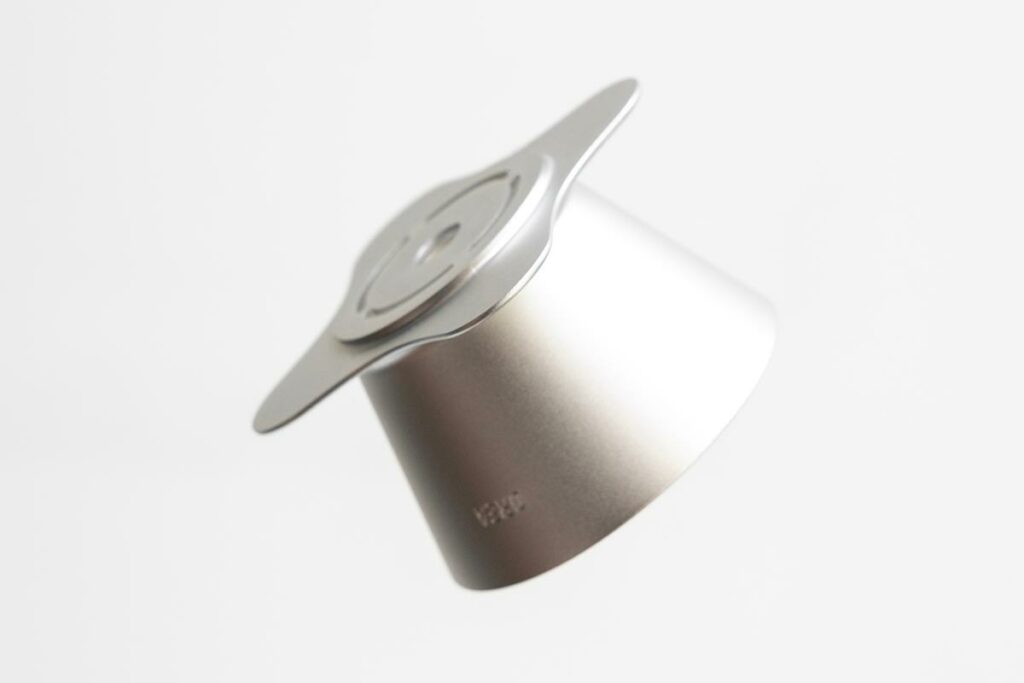
What were some challenges you had when creating the Orea brewer?
The first big challenge in the Orea project was how to make it. I actually wanted to make the first version from recycled plastic, using rudimentary injection methods that used locally-sourced and recycled single-use plastics. We ran into a huge roadblock right away though—using this material would not be legal because there was no way to reliably prove it was food safe even though all source material was food safe.
I went back to the drawing board and decided to find something that is not as investment-heavy and that would be feasible to use too. I found CNC machining to be good a way to make low quantities at high quality and immediately went for that route and used anodized aluminum as base material. I loved the results—a super premium result in black or silver.
What was the launch process like?
I made about 40 of the first prototypes and decided to take a very different approach to my first dripper project. I immediately sent them around the world, to see if other people thought it brewed as well as I did. I expected to be ignored, for folks not to really like it and to get a bunch of tips on how I can make it better. To my surprise, people loved the way it brewed coffee and were quite intrigued by the process, materials, and outcome.
To my surprise, people loved the way it brewed coffee.
With validation from brewers around the world, I then prepared all of my photos, website and social posts. I was gearing to try to launch and sell the V1 and was about to order a conservative 50 units to launch with. The week before my intended launch, I had another idea that I thought would be critical—a new design alteration. So I immediately ordered a print to test and paused my launch (this is a theme for me it seems). What came back became Orea V2. The additional cost to prototype this V2 meant I had no budget for the 50 units of stock I wanted. I decided to launch with pre-orders and hoped I got at least 50 people to be curious enough to take a chance with it. I started to post on Instagram, launched a skeleton website with a newsletter, and shared a bit about my process.
Within a few weeks, I made pre-orders available and quickly got more than the 50 pre-orders I imagined. I went ahead with a bigger batch of Orea V2. This was the real start, and what came next was the real validation from actual customers that spent their cash on the dripper. I had a lot of support from the community—especially on Instagram—and I’m very grateful for that!
What happened after launch? What have you learned?
My first batch was quite a joke logistically and financially. My costs were higher than expected, I sold them for less than I should have, and I had lots of rejected units with faults in the first batch. The first batch was a net loss, but it came with all of the necessary lessons—and importantly, I still was able to get all orders fulfilled.
So far I’ve learned a lot about how to launch these types of products. I’ve learned important things about really understanding cost base, pricing, and the logistics around the whole thing. My goal is to be very independent and to keep things small and personal for now. I don’t have big marketing budgets and I want to keep improving the product, so being close to the conversation and to customers is the key for me. This helps me understand where I’m lacking now, what I can improve, and also what I can explore too. So I try to keep an open mind, to be part of the conversation, and to listen to folks.
Where do you see Orea going from here?
Orea has a long journey from here. We are still only 9 months in and I plan to release quite a few exciting things in the next 6 months. Just recently, the lineup expanded with a new sensory coffee tasting cup called the Sense Cup. These were designed together with a talented young designer named Lautaro Lucero. We studied dozens of shapes to find the one we felt best expressed aromatics, sweetness, and brightness in specialty coffee. They help close the loop on the whole experience, from brewing to drinking.
Photo credit: Orea Photo credit: Orea
My first Orea brewers were designed to be as small as possible and with a travel and outdoor angle. Most people use them day-to-day at home though. With that in mind, you can expect my roadmap to embrace more of the at-home use and what comes with that. There are certain brand values that I want to stay true to, especially around the topic of the brewer, so you can expect me to release things that are high quality, well-designed, functional, long-lasting, unbreakable, and flexible. I also like non-standard material and process choices, so you can expect some of the unexpected too. I am interested to push the conversation into new directions. You can always expect Orea to be a non-standard company and you can also always expect Orea to be iterative in approach and to always look for a better way forward.
The future of Orea is bright and I can’t wait to follow along and be part of the journey. You can follow along too by following Orea on Instagram. If you’d like to try out the Orea dripper yourself, you can order one on the Orea website.
